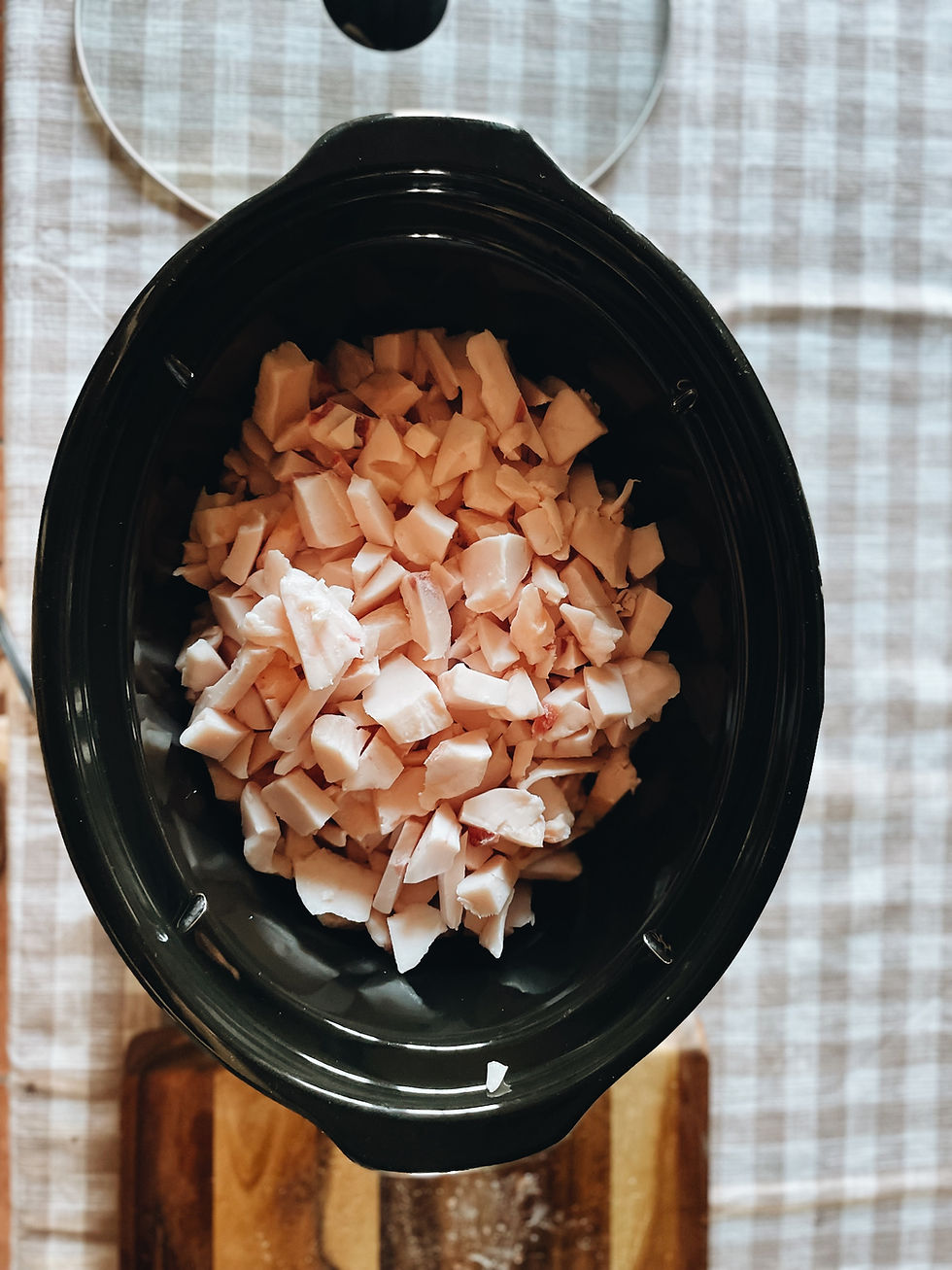Planning a Year's Worth of Food
- Heather Nerheim
- Oct 3, 2022
- 3 min read
Well, it is officially Fall, the temperature has dropped slightly (if it is 70 or below we are all in sweaters), and I am fully ready to light the fireplace, make a cup of tea, grab a cable-knit blanket, hunker down, and plan all of next year's food growing goals.
I like to plan and I like to make pretty things, soooo...I made a PDF harvest planner template. One for produce and one for meat & seafood. You can print as many copies of the pages as you need to plan your entire harvest.

A few notes on calculating yields:
If you're just getting started raising your own food and don't have prior year's growing data to look to, you will have to look up the average yields for each species you plan to grow. You will also need to do a little thinking about how much of each food you typically eat. For example, I know that we used crushed tomatoes A LOT. I want to grow the equivalent of 5 quarts of crushed tomatoes per week. If I'm growing Roma tomatoes, the average yield is 20-30lbs per plant and it takes approximately 5 pounds of fresh tomatoes to make a quart of sauce.
25 lbs fresh tomatoes / 5 lbs sauce = 5 quarts of sauce produced per tomato plant
5 quarts x 52 weeks = 260 quarts
260 quarts / 5 quarts per plant = 52 plants needed
If you are starting plants from seed then you will want to consider a percentage of loss due to seeds not sprouting, dying before transplanting, or before they get established in the garden. There are so many things that can factor into this. Once you've started seeds for different species or direct sown them you will have a better idea of what your typical success rates are. If you are uncertain, factor in 10%.
Continuing with the tomato example, this would mean that I would plant 5 additional seeds to cover potential losses for a total of 57 plants. I'm sure you've realized by now that we dedicate a lot of our garden space to tomatoes! We give our tomato plants about 3ft of room and we never plant a monoculture bed so tomatoes get interplanted with all sorts of things and even grown underneath the trellises used for squash, beans, and cucumbers.
Calculating yields for meat is a very similar process. If, for example, you know that your family will eat two whole roast chicken dinners per week, then grow out 104 chickens. You could do this all at once, or quarterly depending on how you want to schedule and conduct processing.
For larger animals like pork or beef, use your average hanging weight and go from there. For example, our average hanging weight for a Mangalitsa hog is 200lbs. We will get about 150lbs of bone-in cuts of meat, 40lbs pork fat yielding about 3 gallons of lard, and various organ meats, skin, trotters, etc. We utilize every part of the pig and to eat 3 pork-related meals per week (for a family of 6) and have enough lard for cooking/baking we need to grow 3 hogs per year for our personal consumption.
For information about plant yields, planting dates, plant spacing, soil testing, and other garden advice for your geographic area, see if your local university has an ag center or extension office. These will often publish information online and also have physical locations that you can visit. For example, I frequently find useful information on the NC State Extension website, such as this:
You can also find information in the digital and physical publications of The Old Farmer's Almanac. www.almanac.com
Until next time,





Comments